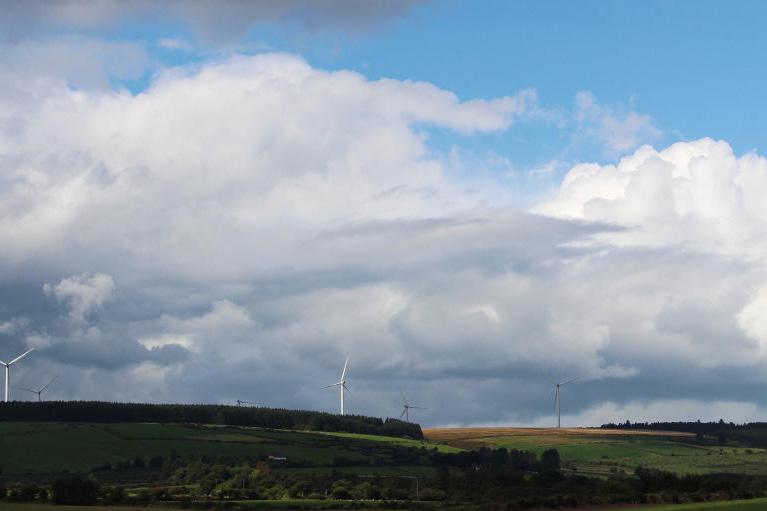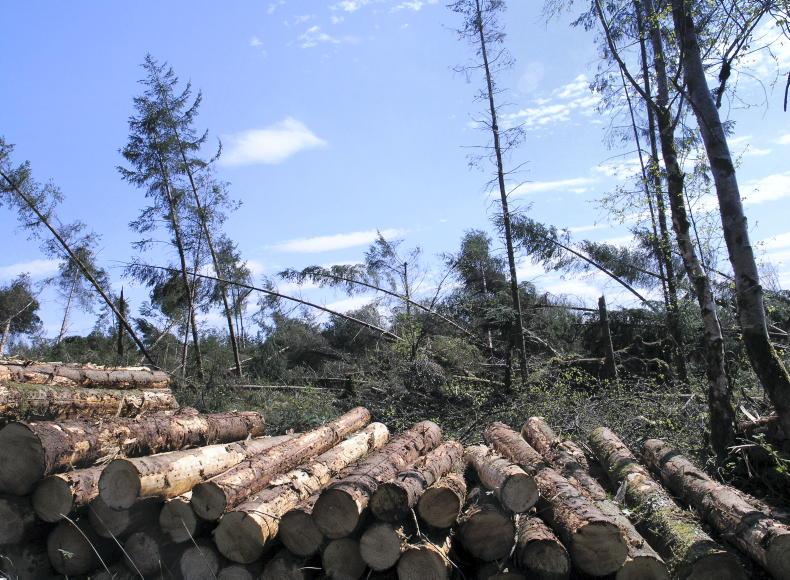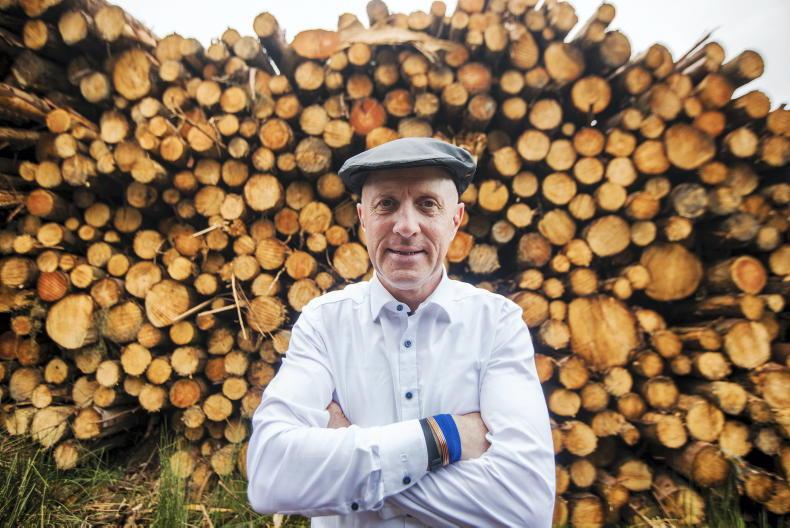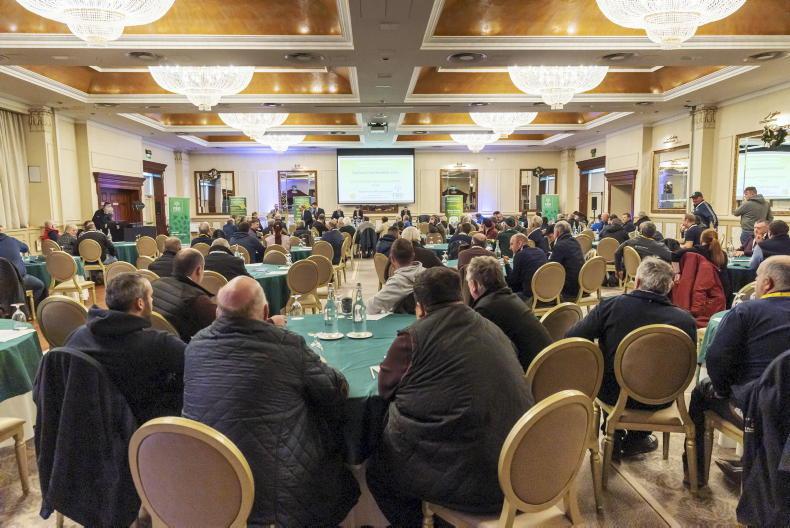A mountain is valuable, not because it is high, but because it is wooded.
– Japanese proverb
This proverb is carved in the Rícmanice Memorial of Trees near Brno in the Czech Republic alongside sayings on trees and forests from countries around the world. The Japanese adage fits easily with the European ideal of the forest’s potential to enhance landscape as well as generating wealth from wood and non-wood products and services.
Rícmanice acts as a repository of international ideas on the role of the forest, mainly supplied from countries with rich forest cultures. As expected, shelter dominates the thinking of the countries of the Taiga or cold boreal forests including Russia (“Your trees can shelter us in bad weather”) and Finland (“Pay attention to the rustle of the spruce tree / that is sheltering your hut”), while renewability and pragmatism is central to Danish thinking (“It is young trees that should be cultivated / and old trees that should be cut”).
Even in the once-rich agricultural Ukraine – regarded as the breadbasket of Europe – the forest is held in high esteem (“Forests are the wealth and beauty of our land...”).
That Europeans would empathise with the Japanese philosophy of placing a high value on wooded mountains is not unexpected. The word “forest” is derived from the Latin foris, meaning “out of doors” or the land that lay beyond enclosed agricultural land. Forests are the most common land cover of mountains in Europe, “covering 41% of the total area” as outlined by the European Environmental Agency (EEA). “In 17 European countries, forests occupy more than 50% of the mountain area” according to Euromontana, the European association of mountain areas.
This approach was also the norm in Ireland for almost a century but changed in recent years, especially since restrictions were put in place on planting productive upland sites from the late 1990s followed by the virtual banning of planting unenclosed land since 2010.
When Irish foresters were charged with the task of foresting the landscape over 100 years ago, it was the 1,200ha of mountain land in Wicklow purchased with Avondale that allowed them take the first tentative steps to restore the nation’s lost forest resource. Some of the highest-yielding forests in Europe were established on the slopes of mountain ranges in Wicklow, the Slieve Blooms and the uplands of the northwest including Donegal, Derry and Tyrone, Ox Mountain – straddling Sligo and Mayo – and the Sperrin Mountains in Northern Ireland.
Munster Barrier
Further south, some of the most productive forests were established in the mountain ranges referred to as “The Munster Barrier” by the late H M Fitzpatrick in 1965 where “many of the most extensive State forests in the country” were established. “Their foothills and slopes and their wide valleys provide some excellent land for afforestation, and State plantations in the counties of Limerick, Kerry, Cork, Tipperary and Waterford amount to over 120,000 acres,” he said.
Most of these forests were established on unenclosed land – outside agricultural land – in concert with the European model.
Forests attract downstream industries as witnessed by the afforestation of the Slieve Blooms. Forestry in the west has attracted two of the most efficient sawmills in Europe – Murrays and ECC – a major international-scale panel board mill – Masonite – in Carrick-on-Shannon and numerous smaller sawmills, forestry contractors and wood energy plants.
The expansion of forestry in Munster has created a forest culture which manifests itself in two thriving major sawmills, two Coillte board mills and numerous small sawmills, timber treatment plants and wood energy outlets. The potential to increase forest cover in these counties by 60% is acknowledged in a number of reports without negatively affecting agricultural production.
However, instead of continuing to spearhead the forest afforestation programme, planting in these counties has declined significantly, as it has in other traditional upland areas. This is due mainly to a reversal of policy by the Forest Service towards afforestation on unenclosed land while a blanket ban in hen harrier designated areas has proved disastrous and may lead to land abandonment according to former IFA forestry chair Michael Fleming.
It is no coincidence that the decline in Munster afforestation has led to a drop in the national afforestation programme. It has also resulted in a significant planting increase in some western counties, as highly mobile forestry companies have relocated to pursue alternative forestry locations in order to survive. This has created an imbalanced national afforestation programme.
Gley soils
Over the past few years, forestry companies have focused on the highly productive and relatively low-lying gley sites, where spectacular growth rates can be achieved. These include parts of counties Mayo, Roscommon, Leitrim, Sligo and Cavan. Regardless of forest policy, these gley soils are going to prove attractive to plant as revenue outstrips many suckler and virtually all sheep systems. In addition, the timber processing mills are in place with the capacity and technology to absorb future volumes of timber and provide badly needed employment.
However, all foresters, forestry companies and organisations such as the IFA and the Society of Irish Foresters agree that a more evenly spread geographic forestry programme is a more desirable social, economic and political option.
This is not to say there hasn’t been a change of mind on where we locate our forests. The forest land use report Land Availability for Afforestation by Dr Niall Farrelly and Dr Gerhardt Gallagher demonstrates that at least 200,000ha could be made available for afforestation on unenclosed land. The authors outline how a more scientific evaluation of sites is required. This is now taking place using vegetation analysis to assess land suitability for planting in accordance with guidelines in the Forest Service Land Types for Afforestation.
However, all forestry companies contacted maintained that this was moving far too slow to make a positive impact on afforestation on unenclosed land. They called for a commonsense approach which would take vegetation and the performance of adjacent forests into account when making a judgment call on planting productive upland sites not only in Munster but in other areas where forestry has proved its worth.
Like continental forests, the evidence from Irish forests proves that uplands and mountains can be made more valuable if forested. Like the continental model, these can also enhance the landscape when planned and managed according to the Forest Service’s own biodiversity, water, harvesting and other environmental guidelines. It’s time to lift the Munster Barrier to afforestation.
Read more
Afforestation down but forest roading up
Increase in forestry jobs in the west
A mountain is valuable, not because it is high, but because it is wooded.
– Japanese proverb
This proverb is carved in the Rícmanice Memorial of Trees near Brno in the Czech Republic alongside sayings on trees and forests from countries around the world. The Japanese adage fits easily with the European ideal of the forest’s potential to enhance landscape as well as generating wealth from wood and non-wood products and services.
Rícmanice acts as a repository of international ideas on the role of the forest, mainly supplied from countries with rich forest cultures. As expected, shelter dominates the thinking of the countries of the Taiga or cold boreal forests including Russia (“Your trees can shelter us in bad weather”) and Finland (“Pay attention to the rustle of the spruce tree / that is sheltering your hut”), while renewability and pragmatism is central to Danish thinking (“It is young trees that should be cultivated / and old trees that should be cut”).
Even in the once-rich agricultural Ukraine – regarded as the breadbasket of Europe – the forest is held in high esteem (“Forests are the wealth and beauty of our land...”).
That Europeans would empathise with the Japanese philosophy of placing a high value on wooded mountains is not unexpected. The word “forest” is derived from the Latin foris, meaning “out of doors” or the land that lay beyond enclosed agricultural land. Forests are the most common land cover of mountains in Europe, “covering 41% of the total area” as outlined by the European Environmental Agency (EEA). “In 17 European countries, forests occupy more than 50% of the mountain area” according to Euromontana, the European association of mountain areas.
This approach was also the norm in Ireland for almost a century but changed in recent years, especially since restrictions were put in place on planting productive upland sites from the late 1990s followed by the virtual banning of planting unenclosed land since 2010.
When Irish foresters were charged with the task of foresting the landscape over 100 years ago, it was the 1,200ha of mountain land in Wicklow purchased with Avondale that allowed them take the first tentative steps to restore the nation’s lost forest resource. Some of the highest-yielding forests in Europe were established on the slopes of mountain ranges in Wicklow, the Slieve Blooms and the uplands of the northwest including Donegal, Derry and Tyrone, Ox Mountain – straddling Sligo and Mayo – and the Sperrin Mountains in Northern Ireland.
Munster Barrier
Further south, some of the most productive forests were established in the mountain ranges referred to as “The Munster Barrier” by the late H M Fitzpatrick in 1965 where “many of the most extensive State forests in the country” were established. “Their foothills and slopes and their wide valleys provide some excellent land for afforestation, and State plantations in the counties of Limerick, Kerry, Cork, Tipperary and Waterford amount to over 120,000 acres,” he said.
Most of these forests were established on unenclosed land – outside agricultural land – in concert with the European model.
Forests attract downstream industries as witnessed by the afforestation of the Slieve Blooms. Forestry in the west has attracted two of the most efficient sawmills in Europe – Murrays and ECC – a major international-scale panel board mill – Masonite – in Carrick-on-Shannon and numerous smaller sawmills, forestry contractors and wood energy plants.
The expansion of forestry in Munster has created a forest culture which manifests itself in two thriving major sawmills, two Coillte board mills and numerous small sawmills, timber treatment plants and wood energy outlets. The potential to increase forest cover in these counties by 60% is acknowledged in a number of reports without negatively affecting agricultural production.
However, instead of continuing to spearhead the forest afforestation programme, planting in these counties has declined significantly, as it has in other traditional upland areas. This is due mainly to a reversal of policy by the Forest Service towards afforestation on unenclosed land while a blanket ban in hen harrier designated areas has proved disastrous and may lead to land abandonment according to former IFA forestry chair Michael Fleming.
It is no coincidence that the decline in Munster afforestation has led to a drop in the national afforestation programme. It has also resulted in a significant planting increase in some western counties, as highly mobile forestry companies have relocated to pursue alternative forestry locations in order to survive. This has created an imbalanced national afforestation programme.
Gley soils
Over the past few years, forestry companies have focused on the highly productive and relatively low-lying gley sites, where spectacular growth rates can be achieved. These include parts of counties Mayo, Roscommon, Leitrim, Sligo and Cavan. Regardless of forest policy, these gley soils are going to prove attractive to plant as revenue outstrips many suckler and virtually all sheep systems. In addition, the timber processing mills are in place with the capacity and technology to absorb future volumes of timber and provide badly needed employment.
However, all foresters, forestry companies and organisations such as the IFA and the Society of Irish Foresters agree that a more evenly spread geographic forestry programme is a more desirable social, economic and political option.
This is not to say there hasn’t been a change of mind on where we locate our forests. The forest land use report Land Availability for Afforestation by Dr Niall Farrelly and Dr Gerhardt Gallagher demonstrates that at least 200,000ha could be made available for afforestation on unenclosed land. The authors outline how a more scientific evaluation of sites is required. This is now taking place using vegetation analysis to assess land suitability for planting in accordance with guidelines in the Forest Service Land Types for Afforestation.
However, all forestry companies contacted maintained that this was moving far too slow to make a positive impact on afforestation on unenclosed land. They called for a commonsense approach which would take vegetation and the performance of adjacent forests into account when making a judgment call on planting productive upland sites not only in Munster but in other areas where forestry has proved its worth.
Like continental forests, the evidence from Irish forests proves that uplands and mountains can be made more valuable if forested. Like the continental model, these can also enhance the landscape when planned and managed according to the Forest Service’s own biodiversity, water, harvesting and other environmental guidelines. It’s time to lift the Munster Barrier to afforestation.
Read more
Afforestation down but forest roading up
Increase in forestry jobs in the west











SHARING OPTIONS